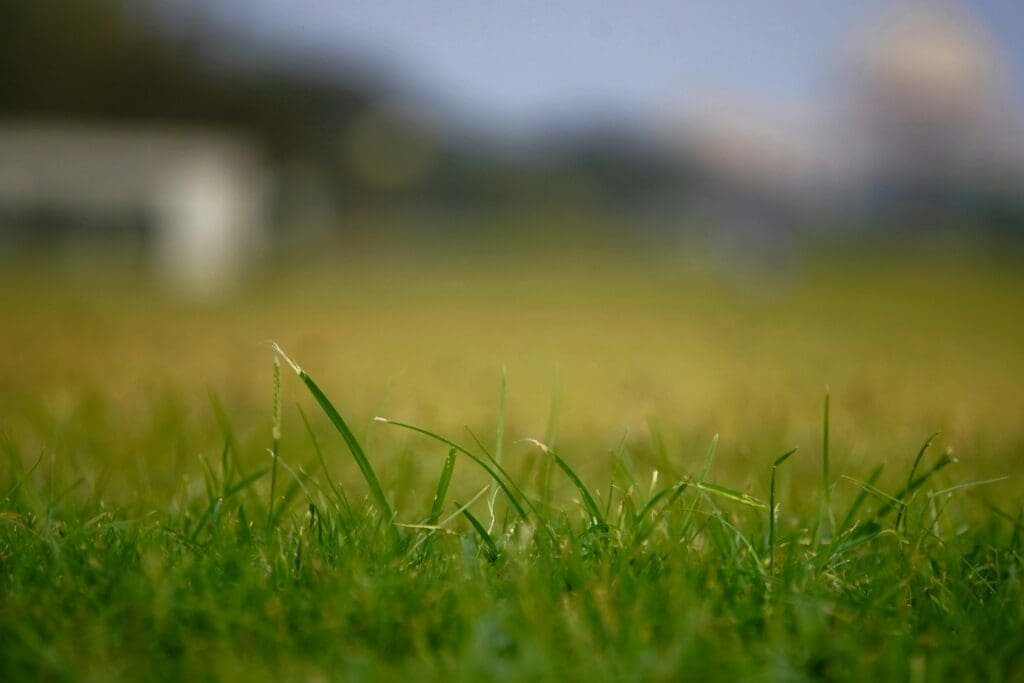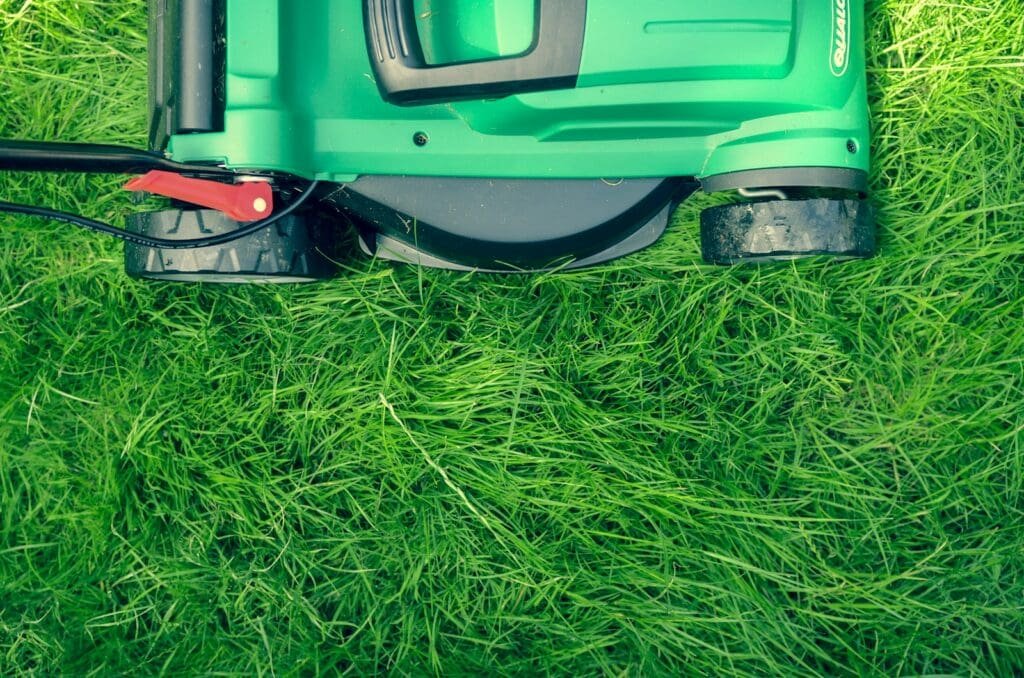Introduction to Hydroseeding
Have you ever wondered why some lawns look so vibrant and lush?
Good chances are they’ve been hydroseeded.
A process that stands out as a beautiful fusion of science and nature, hydroseeding is a landscaping marvel that we’re going to explore in today’s article.
“Hydro-what?” you might ask.
Don’t let the intricate term intimidate you!
Simply put, hydroseeding, or hydromulching, refers to a method of planting grass through the process of spraying a mixture of seed, mulch, fertilizer, and water onto a soil surface.
First used in the United States in the 1950s, this technique has become a popular method for landscape beautification, soil erosion control, and seed germination.
In this comprehensive guide, we will look into the purpose of hydroseeding, its key components, benefits, and how it compares to regular seeding. We will also examine the possibilities of hydroseeding over an existing lawn and discuss the potential drawbacks of this technique.
Ready to sow the seeds of knowledge? Let’s begin!
Table of Contents
Understanding Hydroseed and Its Purpose
What is Hydroseed?
Hydroseeding, also called hydromulching, involves spraying a mixture of seed, mulch, fertilizer, and water onto soil. This technique promotes rapid and uniform grass growth and is often used in landscaping and construction.
Key Components of Hydroseed
| Component | Description |
|---|---|
| Seed | Chosen based on the local climate, soil type, and desired grass type. |
| Mulch | Helps retain moisture and protect the seeds during germination. |
| Fertilizer | Boosts initial growth by providing essential nutrients. |
| Water | Aids in the distribution of the hydroseed mix and supports germination. |
Purpose of Hydroseed
- Erosion Control: The mulch component helps stabilize the soil, preventing erosion on slopes and areas with loose soil.
- Quick Germination: The mixture promotes faster seed germination compared to traditional seeding methods.
- Cost-Effective: While initially more costly than traditional seeding, it can be more economical than sod.
- Uniform Application: Hydroseeding provides even coverage, ensuring a consistent grass appearance.
- Versatile: Effective for various environments including residential lawns, commercial spaces, and large construction sites.
Benefits of Hydroseeding
| Benefit | Detail |
|---|---|
| Efficiency | Can cover large areas quickly and uniformly. |
| Cost Savings | Less labor-intensive and less expensive than laying sod. |
| Ecological Impact | Reduces soil erosion and runoff, protecting local waterways. |
| Quality of Growth | Produces healthy, strong grass plants due to the nutrient-rich mixture. |
For more detailed information on hydroseeding, you can visit HGTV which provides more insights on landscaping techniques.
Comparing Hydroseed to Regular Seeding

Why Consider Hydroseeding over Regular Seeding?
As discussed above, hydroseeding offers many practical benefits. But what makes it a superior choice over regular seeding—the traditional method of manually sowing seeds into the soil? Let’s take a look.
Consistent Coverage: Hydroseeding provides an even coating of the seed mixture over the ground. This prevents patchy growth—a common issue with regular seeding—and leads to a more uniform lawn.
Effective on Slopes: Regular seeding is often futile on slopes due to soil erosion. Since hydroseed forms a bond with the soil once sprayed, it’s a more viable solution for such hard-to-reach areas.
Better Germination Rate: Hydroseed provides an ideal microenvironment for seed germination due to the mix of mulch and water. This increases the success rate compared to broadcasting dry seeds.
No Seed Migration: A common issue with regular seed is its tendency to move due to wind or water run-off; hydroseed stays put, ensuring seeds grow exactly where they’re sprayed.
A Closer Look: Cost and Time Efficiency
Cost Efficiency
As we have seen, hydroseeding requires a higher initial investment than traditional seeding—mainly because of the need for specialized equipment. However, the overall cost can still be lower. This is primarily due to faster germination, less need for reseeding, and significantly less labor needed for application.
Time Efficiency
In terms of time and effort, regular seeding can be particularly draining—especially for large areas. Manual seeding calls for intensive labor and attention, including preparing the soil, planting seeds, putting down mulch, and then watering. This process is expedited and simplified with hydroseeding.
Limitations of Hydroseeding
Clearly, hydroseeding outperforms regular seeding on numerous fronts. However, it is not without its drawbacks. These include the need for specialized equipment and the relatively higher upfront cost compared to traditional seeding. Furthermore, hydroseeding should ideally be carried out by professionals for the best results, which might not appeal to DIY enthusiasts.
Nonetheless, considering the efficiency and the quality of results, hydroseeding can often be a worthwhile investment, especially for larger areas. For more information on residential and commercial seeding practices, check out the resources available at This Old House.
Can You Hydroseed Over an Existing Lawn?

Feasibility and Practical Steps
Hydroseeding over an existing lawn, also known as overseeding, is feasible but requires careful preparation to be effective. Here are essential steps to follow to ensure the best results:
- Mow the Existing Lawn: Start by mowing your existing lawn as short as possible without scalping it. This helps the hydroseed mixture make better contact with the soil.
- Dethatching: Remove the layer of dead grass and organic matter (thatch) that’s built up between the grass and the soil surface using a dethatcher or a simple rake.
- Aeration: Core aeration helps to loosen compacted soil and provides the new seeds with more accessible pathways to root. Use an aerator to create small holes in the soil.
- Preparation of the Hydroseed Mix: Select a seed variety compatible with your existing lawn species. Add mulch, fertilizer, and water to the mix in appropriate proportions.
- Application: Use a hydroseeder to spray the seed mixture evenly over the lawn. Ensure even coverage to avoid patchy growth.
- Watering: Keep the soil consistently moist to help the seeds germinate. Avoid overwatering to prevent waterlogging.
When to Hydroseed Over an Existing Lawn
Timing is essential for successful overseeding with hydroseed. Aim to carry out the process during the optimal growing seasons for your grass type:
| Grass Type | Ideal Overseeding Time |
|---|---|
| Cool-Season Grasses | Early Fall or Early Spring |
| Warm-Season Grasses | Late Spring or Early Summer |
This timing ensures that the seeds have the best environmental conditions to germinate and grow strong roots.
Pros and Cons of Hydroseeding Over Existing Lawns
Overseeding with hydroseed can rejuvenate a tired lawn, but there are both advantages and disadvantages to consider.
- Pros:
- Improved Lawn Density: Overseeding thickens your lawn, filling in bare spots and preventing weed growth.
- Enhanced Grass Variety: Allows introduction of a more resilient or desirable grass type without starting from scratch.
- Less Disruption: No need to remove the existing lawn entirely, which saves time and labor.
- Cons:
- Preparation Requirements: Effective overseeding requires intensive lawn prep work, such as mowing, dethatching, and aeration.
- Initial Cost: The upfront cost can be higher due to the specialized hydroseeding equipment and materials.
- Professional Application Recommended: To achieve the best results, hiring a professional may be necessary, which can increase costs.
If you’re considering hydroseeding over an existing lawn, these factors will help you assess whether it’s the right choice for your lawn care needs. For additional information, including tips and professional insights, visit Today’s Homeowner.
Disadvantages of Hydroseeding
High Upfront Cost
Despite its long-term cost-effectiveness, hydroseeding requires a higher initial investment compared to traditional seeding. This is mainly due to the specialized equipment needed to mix and spray the slurry, as well as the cost of materials like the seed, mulch, and fertilizers. Professional hydroseeding services can also add to the overall expense, making it less appealing for those on a tight budget.
Equipment and Expertise Required
Hydroseeding is not as simple as spreading seed by hand. It demands specific machinery and mechanical skill, which may not be available to the average homeowner. The need for specialized hydroseeding equipment not only drives up costs but also limits the feasibility for DIY enthusiasts. Therefore, many opt to hire professionals, which can add to the overall expense.
Weather Sensitivity
Hydroseeding is highly sensitive to weather conditions. Adverse weather like heavy rain or hot, dry conditions can severely impact the success of seed germination. For instance, heavy rainfall can wash away the hydroseed mixture before it has a chance to bond with the soil, while overly dry conditions can hinder the seed’s ability to germinate and establish roots. Ensuring optimal weather conditions around the time of hydroseeding is crucial but not always controllable.
Limited Timing Window
The timing for hydroseeding is critical. Unlike traditional seeding methods that can often be done at various times throughout the year, hydroseeding requires more precise timing to ensure success. For example, cool-season grasses should ideally be hydroseeded in early fall or early spring, whereas warm-season grasses fare better when planted in late spring or early summer. This limited window can make scheduling more challenging, especially for large projects.
Maintenance Requirements
While hydroseeding can speed up the germination process, it still requires significant post-application care to ensure successful growth. This includes keeping the soil consistently moist, monitoring for pests, and ensuring that the area is not disturbed. Additionally, the mulch layer needs time to decompose and integrate with the soil, which means that the lawn cannot be mowed or heavily trafficked immediately after application.
Potential for Patchy Growth
Although hydroseeding aims to provide uniform coverage, there is still the possibility of uneven growth. Factors such as inconsistent watering, varying soil conditions, and improper application techniques can result in patchy areas. Moreover, if the seed mixture is not customized to match the specific soil and climate conditions of the area, it can lead to suboptimal results.
In summary, while hydroseeding offers numerous benefits, it also has several notable drawbacks that should be carefully considered.
Wrapping Up: The Versatility and Potential Drawbacks of Hydroseed
In conclusion, hydroseeding proves to be a proficient technique in landscaping and construction due to its ability to promote rapid and regular growth of grass.
It employs a mixture of seeds, mulch, fertilizer, and water, which are selected according to the local climate, soil type, and desired grass type. Hydroseeding provides excellent coverage, controls erosion, fosters quick germination and works as a cost-effective solution in the long run.
However, hydroseeding also poses some challenges. Among these are the initial high cost, the need for specialized equipment and skills, and the sensitivity to weather conditions, despite its overall efficiency and ecological impact.
Even so, considering the quality and speed of results, hydroseeding could prove to be a worthwhile investment, particularly for larger areas or tough terrains.
Frequently Asked Questions – FAQs
What is hydroseeding?
Hydroseeding is a technique that involves spraying a mixture of seed, mulch, fertilizer, and water onto soil to promote uniform and rapid grass growth. It’s often used in landscaping and construction.
What are the components of hydroseed?
The key components are seed, mulch, fertilizer, and water. The seed type is chosen based on the local climate, soil type, and desired grass variety. Mulch helps retain moisture, fertilizer boosts growth by providing nutrients, and water aids in the distribution and supports germination.
Why choose hydroseed over regular seeding?
Hydroseeding offers a uniform application, making it more effective on slopes and preventing seed migration caused by wind or water run-off. It also provides a microenvironment perfect for seed germination, leading to better growth rates compared to traditional seeding.
What are the disadvantages of hydroseeding?
While hydroseeding has numerous benefits, it also presents some challenges. These include a higher upfront cost, requirement for specialized equipment and expertise, sensitivity to weather conditions, limited timing for application based on grass type and substantial maintenance post-application.
Is it possible to hydroseed over an existing lawn?
Yes, hydroseeding or “overseeding” over an existing lawn is feasible. However, it requires careful preparation such as mowing the lawn, removing dead grass, aerating the soil, and careful selection and application of the hydroseed mix.






